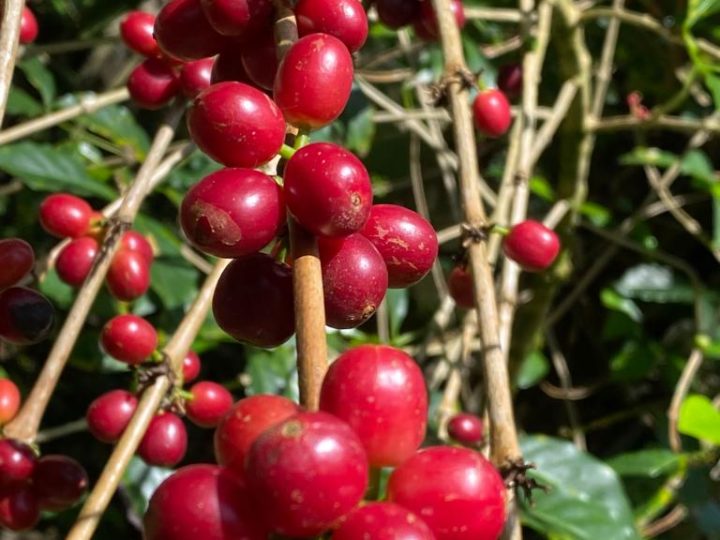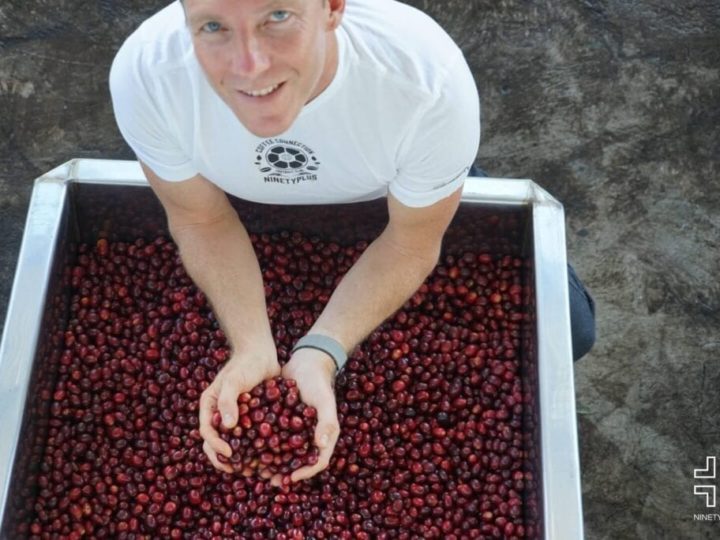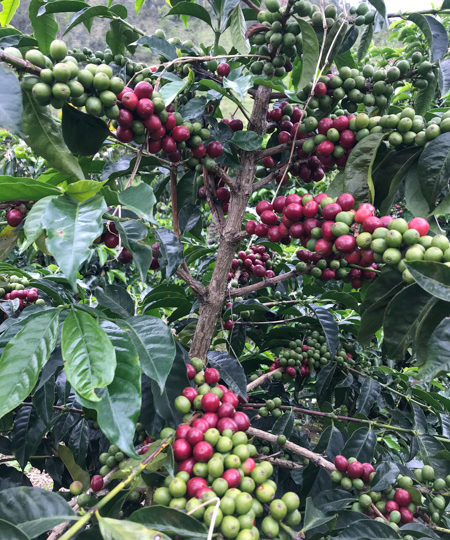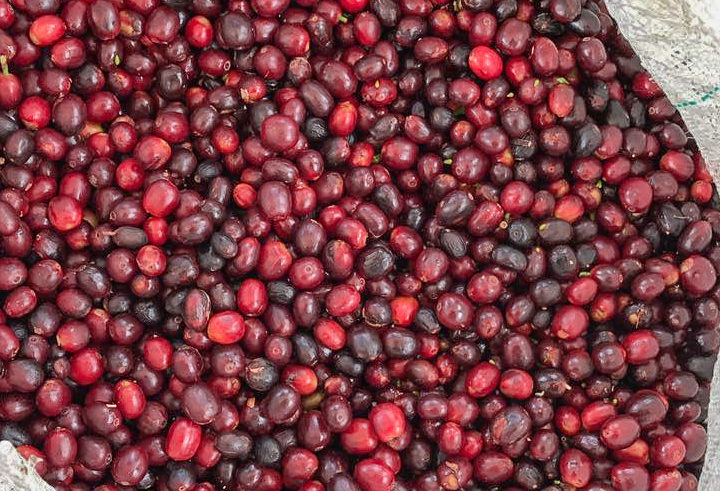Colombia El Diviso Sidra
We cupped this coffee kind of blind, without paying too much attention to where the coffee was from. After we had cupped and made an easy choice to go with El Divisio, we noticed that this coffee was produced by Nestor Lasso. After noticing this the first thought was: “Ok, I get it!” Coffees produced by Nestor won this spring at Helsinki Coffee Festival #1st and #2 price in “Filter Coffee of the Year” competition, and also #2nd place in “Espresso Coffee of the Year”! And now we have this for Rare: super!
Farm: El Divisio
Farmer: Nestor Lasso
Location: Colombia, Huila, Pitalito
Altitude: 1750 msl
Varietal: Bourbon Sidra
Process: Natural
Expect notes of: funky and boozy phosphoric, tropical
5 years ago, Nestor Lasso and his brother Adrian took over the family farm and branched out into specialty coffee and experimentation rather than growing coffee like their parents. Today, at 22 and 24, the two brothers have teamed up with Jhoan Vergara, also the child of a coffee farmer, to create El Diviso. El Diviso brings together the two-family farms, El Diviso (Nestor and Adrian Lasso) and Las Flores (Jhoan Vergara), close to the town of Pitalito, in the Huila region of Colombia. This partnership was great as these 3 young guys united their knowledge to improve quality.
Then, 3 years ago, Cat & Pierre, founders of CATA Export and the 3 producers started a journey of trial and error to define the fermentation processes and protocols at the farm, with the aim to link these coffees directly to the UK market. This learning process has been time and money consuming but with an exciting outcome as today these coffees have been used in many barista competitions across Europe. Recently winning 1st place at Brewers Cup in Ireland and 3rd in Austria.
Today Cata Export and Finca El Diviso work as one team, the reason why Cat is not alone in this trip to the UK but with Nestor to finally meet all the roasteries who have been behind this process too. Nestor’s and Cat’s friendship is a good example of what Cata Export do, working directly from the farms is a very enriching process for them not only for the complexity of topics such as agronomy but also for the relationships Cata builds which ultimately translate into an economic benefit for Cata’s community, in this way many more young producers like Nestor have stayed in coffee and have had the chance to build a career.
Nestor’s words:
“I grew up in a vereda (locality, editor’s note.) called Normandia, near the town of Pitalito in the south of the Huila region. I always grew up on the farm and since I can remember the region has always been a coffee zone.
In general, being a coffee producer is poorly paid and it is not very attractive. The only thing that allows producers not to starve is to eat the fruits and vegetables produced on the farm. In terms of material goods, we only have access to what is strictly necessary. Many young people therefore prefer to go to town to find an office job or a less physically demanding job because they think that the coffee is not worth it. Beyond what specialty coffee brings economically, I have always had a passion for production. When I realised that specialty coffee offered a real possibility of economic development, and that in addition I could develop my knowledge of coffee production, and in particular the processes, I really got into it.
What really makes the difference is the passion that the producer can have for the coffee. If you’re not naturally passionate, you’ll never get the trick! Often, some coffee growers here have a lot of money because they have a lot of land and the best machines possible. But specialty coffee does not interest them, they do not see the point of changing because they are not as passionate about coffee as we are. I have seen that specialty coffee consumption has changed a lot in recent years in the country. Until recently, Colombians only drank coffee by-products, anything that could not be exported. But people here have realized that coffee is a much more noble product than it seems. Many producers today keep part of their harvest to roast it themselves and drink it at home.
All the specialty coffee craze has really brought about a different way of looking at coffee.”
Process details:
● STEP 1 SELECTION OF CHERRIES HARVESTED RIPE GRAIN, OXIDATION 12 HOURS TEMPERATURE 25 ° C
● STEP 2 ANAEROBIC FERMENTATION IN A BAG OR PLASTIC TANK FOR 50 HOURS AT A TEMPERATURE OF 18-16°C, WE TAKE THE COFFEE TO A TANK FOR OXIDATION FOR 20 HOURS, MAXIMUM TEMPERATURE 42°C
● STEP 3 WE TAKE CHERRY COFFEE TO BAGS OF 50 KLS FOR ANAEROBIC FERMENTATION FOR 30 HOURS, TEMPERATURE 16-20°C
● STEP 4 WE TAKE COFFEE TO TANKS SUBMERGING THEM IN WATER AT 45°C, ADDING LEACHATE FROM THE PREVIOUS HARVEST, RECIRCULATING LEACHATE FOR 18 HOURS
● STEP 5 DRYING IN A MARQUEE MAXIMUM TEMPERATURE 32°C, DRYING IS INTERRUPTED AT 18% HUMIDITY, IT IS TRANSFERRED TO BLACK PLASTIC BAGS IN A CELLAR WITHOUT LIGHT, IT IS LEFT TO REST FOR 60 HOURS AND THEN CONTINUE DRYING UNTIL OBTAINING 11 % MOISTURE.
Newer
#221 Kahiwa Coffee Roasgters: Primavera Sisterhood
Older
#220 Mokkamestarit: Honduras Swiss Water
Comments (0)
Leave a reply
You must be logged in to post a comment.




